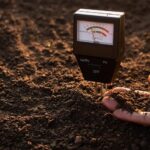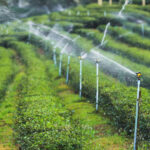Conducting market research for agroprocessed products involves gathering information and insights about the target market, consumer preferences, competitors, and industry trends. Here are the steps to conduct market research for agroprocessed products:
- Define your research objectives: Determine the specific goals of your market research. Are you looking to understand consumer demand, identify potential market segments, evaluate pricing strategies, or assess the competitive landscape? Clearly defining your objectives will help guide your research efforts.
- Identify your target market: Define the specific segment of the population that you want to focus on. Consider factors such as demographics (age, gender, location), psychographics (lifestyle, preferences), and behavior (purchasing patterns, consumption habits). This will help you tailor your research and understand your potential customers better.
- Select your research methods: There are various methods you can use to gather market research data. Some common approaches include:a. Surveys: Conduct surveys to collect information directly from consumers. You can use online surveys, phone surveys, or face-to-face interviews. Ask questions about their preferences, buying habits, brand awareness, and satisfaction levels.b. Focus groups: Organize focus group discussions with a small group of targeted consumers. Encourage participants to share their opinions, experiences, and suggestions related to agroprocessed products. This qualitative method can provide in-depth insights.c. Observation: Observe consumers in their natural environment, such as supermarkets or farmers markets, to understand their behavior, product choices, and interactions. This can give you valuable information about consumer preferences and trends.d. Secondary research: Gather existing data from various sources, such as industry reports, government publications, trade associations, and market research firms. This can provide you with valuable insights into the overall market size, growth rate, and trends.
- Analyze the data: Once you have collected the research data, analyze it to identify patterns, trends, and key findings. Look for common themes and draw meaningful conclusions. Use statistical analysis tools or software to help organize and interpret the data effectively.
- Assess the competitive landscape: Understand your competitors and their offerings. Analyze their pricing strategies, product features, marketing campaigns, and target markets. Identify any gaps or opportunities that you can leverage to differentiate your agroprocessed products.
- Draw conclusions and make decisions: Based on your analysis, draw conclusions about the market potential, consumer preferences, and competitive landscape. Use this information to make informed decisions about product development, pricing, distribution channels, and marketing strategies.
- Monitor and adapt: Market research is an ongoing process. Continuously monitor the market, track consumer trends, and assess changes in consumer preferences. This will help you adapt your agroprocessed products to meet evolving market demands and maintain a competitive edge.
Remember, market research provides valuable insights, but it’s important to combine it with your own expertise, industry knowledge, and judgment to make well-informed business decisions.







